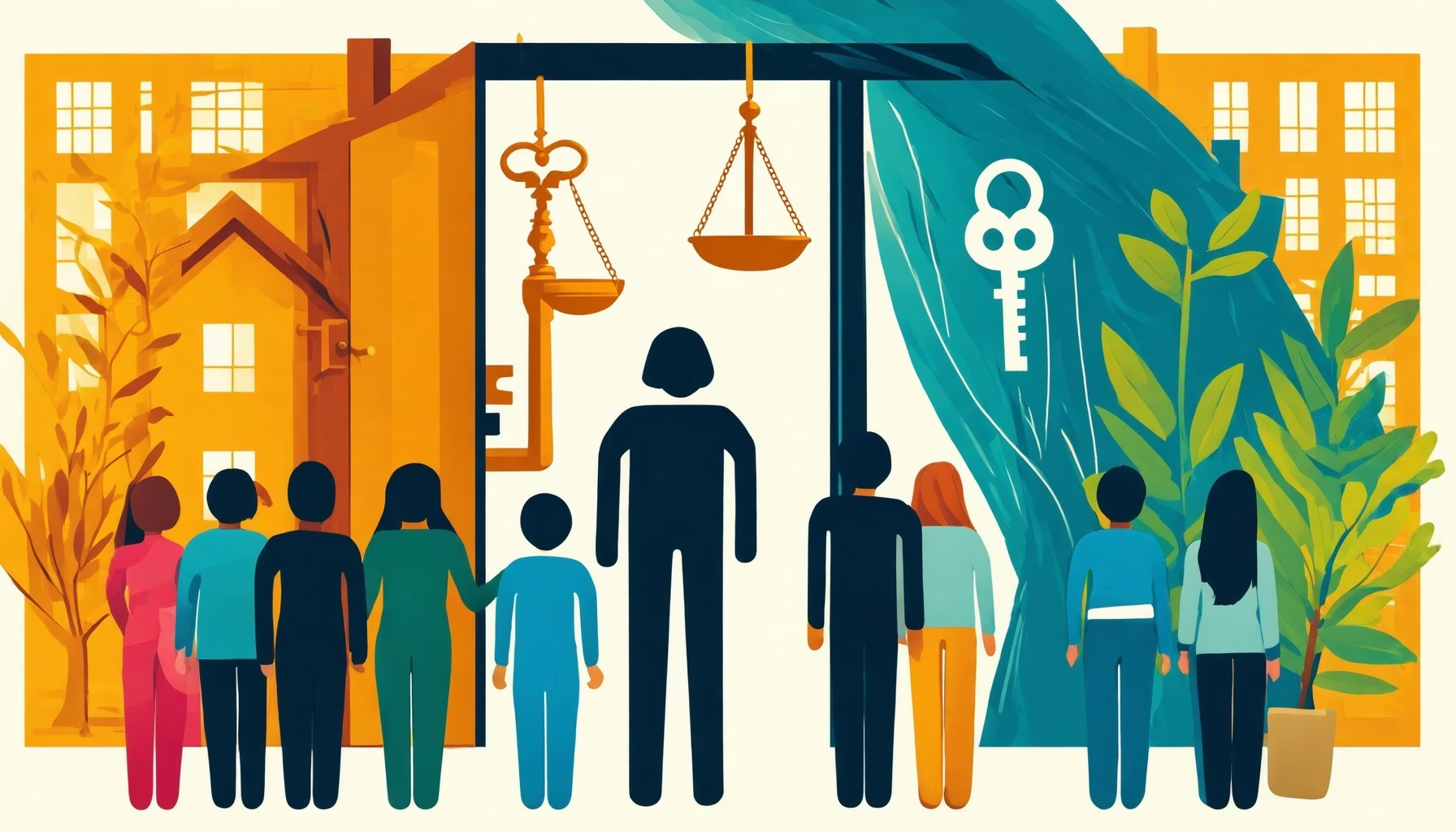Key Takeaways
- Understanding COVID-19 renters rights is essential for navigating housing stability during and after the pandemic.
- Explore available rent relief programs to assist in preventing eviction due to financial hardship.
- Eviction protections vary by state; stay informed about local laws to safeguard your housing rights.
- The Ellis Act allows landlords to evict tenants without cause, but some cities offer additional tenant protections.
- Utilize the SB 91 COVID-19 Tenant Relief Act for eviction prevention and emergency rental assistance options.
- Access the Eviction Protection Grant Program for legal assistance if facing eviction.
- Stay updated on the status of eviction moratoriums and local protections that may still be in place.
As the impact of COVID-19 continues to resonate across communities, understanding COVID-19 renters rights has never been more crucial. This article aims to provide essential insights into the various aspects of renters’ rights during this unprecedented time, including vital information on rent relief programs, eviction protections, and the implications of the Ellis Act. We will explore whether there is still COVID rent relief in California, the steps tenants can take to prevent eviction, and the key provisions of the SB 91 COVID-19 Tenant Relief Act. Additionally, we will discuss the eviction protection grant program and provide a timeline of the COVID eviction moratorium, including its start and end dates. By the end of this article, you will have a comprehensive understanding of your rights as a renter during these challenging times and the resources available to help you navigate the complexities of housing security.
Is there still COVID rent relief in CA?
As of now, the California COVID-19 Rent Relief program has officially closed. This program was instrumental in providing financial assistance to over 371,000 households, distributing more than $4.7 billion in rent and utility support during the COVID-19 emergency. For those seeking assistance, it’s important to note that while the program has ended, there may still be local resources available for renters facing financial hardship. Various counties and cities in California may offer their own rental assistance programs or resources.
For the most accurate and up-to-date information, residents are encouraged to visit the California Department of Housing and Community Development website or consult local housing authorities. Additionally, organizations such as the California Housing Partnership provide valuable resources and guidance for renters in need. For further details and data about the program’s impact, please refer to the official dashboard provided by the California government.
Overview of COVID-19 Rent Relief Programs
The COVID-19 Rent Relief Programs were designed to assist tenants who faced financial difficulties due to the pandemic. These programs aimed to prevent evictions and provide stability for renters during an unprecedented time. The relief included direct payments to landlords for unpaid rent and utility bills, ensuring that tenants could remain in their homes while navigating economic challenges. Understanding these programs is crucial for renters who may still be seeking assistance through local initiatives.
Eligibility Criteria for Rent Relief in California
Eligibility for rent relief in California typically required tenants to demonstrate financial hardship due to the COVID-19 pandemic. Key criteria included:
- Proof of income loss or reduction due to the pandemic.
- Income levels at or below 80% of the area median income.
- Demonstration of risk of homelessness or housing instability.
While the statewide program has concluded, local programs may have similar or adjusted criteria. It’s advisable for renters to check with local housing authorities or visit navigating housing rights for specific eligibility requirements and available resources.

How to Prevent Getting Evicted?
Understanding your rights and the protections available to you during the COVID-19 pandemic is crucial for preventing eviction. With various laws and programs in place, tenants can take proactive steps to safeguard their housing situation.
Understanding Eviction Protections During COVID-19
During the COVID-19 pandemic, several eviction protections were implemented to assist renters facing financial hardships. These protections vary by state but generally include temporary eviction moratoriums and requirements for landlords to provide notice before initiating eviction proceedings. For instance, California has enacted laws that prevent landlords from evicting tenants who are unable to pay rent due to COVID-19-related issues. It’s essential to stay informed about the specific protections available in your area, as these can change based on local and state regulations.
Steps to Take if Facing Eviction
To prevent getting evicted, consider the following comprehensive strategies:
- Create a Financial Plan: Assess your current financial situation and develop a budget that prioritizes rent payments. Identify areas where you can cut expenses to allocate more funds towards housing costs.
- Seek Financial Assistance: Explore state and local resources that provide financial aid for rent and utilities. Organizations such as the U.S. Department of Housing and Urban Development (HUD) offer programs that may assist you in covering overdue payments. Websites like Benefits.gov can help you find assistance programs in your area.
- Communicate with Your Landlord: Open a dialogue with your landlord about your situation. Discuss the possibility of a repayment plan that allows you to pay back overdue rent in manageable installments. Many landlords prefer to work with tenants rather than go through the eviction process.
- Know Your Rights: Familiarize yourself with tenant rights in your state. Many states have laws that protect tenants from eviction, especially during emergencies or financial hardships. Resources like the National Low Income Housing Coalition provide valuable information on tenant protections.
- Utilize Mediation Services: If disputes arise, consider mediation services that can help facilitate discussions between you and your landlord. This can lead to mutually agreeable solutions without resorting to eviction.
- Stay Informed About Local Policies: Keep abreast of any temporary eviction moratoriums or housing assistance programs that may be enacted in your area, especially during economic downturns or public health crises.
By implementing these strategies, you can significantly reduce the risk of eviction and maintain your housing stability. For more detailed information, consult local housing authorities or legal aid organizations that specialize in tenant laws and protections.
What is the Ellis Act Protected Tenants?
The Ellis Act is a California state law that allows landlords to evict tenants from rental properties without cause, effectively enabling them to withdraw their units from the rental market. This “no-fault” eviction law is particularly significant because it does not require landlords to provide a specific reason for the eviction, unlike other eviction laws that mandate justifiable grounds such as non-payment of rent or lease violations.
Explanation of the Ellis Act and Its Implications
Key points about the Ellis Act and its implications for tenants include:
- Scope of the Ellis Act: The law applies to residential rental properties and permits landlords to evict all tenants in a building if they intend to cease renting the units. This can lead to significant displacement, especially in areas with high housing demand.
- Tenant Protections: While the Ellis Act allows for eviction without cause, some cities have implemented local ordinances to provide additional protections for tenants. For instance, municipalities like San Francisco and Los Angeles have enacted laws that may require landlords to provide relocation assistance or impose waiting periods before evictions can occur.
- Legal Challenges: Tenants facing eviction under the Ellis Act can contest the eviction in court, arguing that the landlord is not genuinely exiting the rental market or that the eviction violates local tenant protection laws.
- Impact on Housing Market: The Ellis Act has been a controversial topic, as it can exacerbate housing shortages and contribute to gentrification. Critics argue that it disproportionately affects low-income tenants and communities of color.
- Recent Developments: As of 2023, ongoing discussions around housing policy reform in California include proposals to amend the Ellis Act to enhance tenant protections and address the housing crisis.
For more detailed information on tenant rights and the Ellis Act, resources such as the U.S. Department of Housing and Urban Development and local housing advocacy groups provide comprehensive guides and legal assistance.
Rights of Tenants Under the Ellis Act
Tenants under the Ellis Act retain certain rights, despite the challenges posed by this law. Understanding these rights is crucial for those facing potential eviction:
- Right to Notice: Landlords must provide proper notice before evicting tenants under the Ellis Act, typically 60 days, allowing tenants time to prepare for relocation.
- Right to Relocation Assistance: In some jurisdictions, tenants may be entitled to relocation assistance, which can help cover moving costs and provide financial support during the transition.
- Right to Contest Eviction: Tenants can challenge the eviction in court, particularly if they believe the landlord is not genuinely exiting the rental market or if local laws provide additional protections.
- Right to Legal Representation: Tenants have the right to seek legal aid and representation to navigate the eviction process and understand their options.
For more insights on tenant protections, visit navigating housing rights and explore your options.
What is the SB 91 Covid-19 Tenant Relief Act?
The COVID-19 Tenant Relief Act, also known as SB 91, was enacted on January 29, 2021, to provide critical protections for tenants affected by the COVID-19 pandemic. This legislation aims to prevent evictions for tenants who have experienced financial hardship due to the pandemic, ensuring housing stability during this challenging time.
Key Provisions of the SB 91 Act
Key provisions of the SB 91 include:
- Eviction Protections: The Act extends eviction protections for tenants who can demonstrate financial distress related to COVID-19. This includes those who have lost income, experienced increased expenses, or faced other financial challenges due to the pandemic.
- Emergency Rental Assistance Program: SB 91 establishes a state-funded Emergency Rental Assistance Program, which allocates funds to assist tenants in paying back rent and utilities. This program is crucial for helping tenants avoid eviction and maintain housing stability.
- Application Process: Tenants must apply for rental assistance through the designated state or local agencies. It is essential for tenants to provide documentation of their financial hardship and any relevant lease agreements.
- Landlord Participation: Landlords are encouraged to participate in the rental assistance program, as it can provide them with the necessary funds to cover unpaid rent while ensuring tenants remain housed.
- Expiration and Extensions: The protections and assistance programs outlined in SB 91 are subject to specific timelines and may be extended based on the evolving public health situation and economic recovery.
Impact of SB 91 on Renters and Landlords
The SB 91 Act significantly impacts both renters and landlords by creating a framework for financial assistance and eviction prevention. For renters, the Act provides a safety net during times of economic uncertainty, allowing them to stay in their homes while they recover from financial setbacks. For landlords, participating in the Emergency Rental Assistance Program can help mitigate losses from unpaid rent, fostering a cooperative approach to resolving rental issues.
For more detailed information on the COVID-19 Tenant Relief Act, including eligibility requirements and application procedures, you can refer to the U.S. Department of Housing and Urban Development and the Nolo legal resources. These resources provide authoritative guidance on navigating the provisions of SB 91 and accessing available assistance.

What is the Eviction Protection Grant Program?
The Eviction Protection Grant Program (EPGP) is a federal initiative launched in 2021 by the U.S. Department of Housing and Urban Development (HUD) aimed at providing essential legal assistance to low-income tenants facing eviction. This program plays a crucial role in safeguarding renters’ rights during challenging times.
Overview of the Eviction Protection Grant Program
The primary objectives of the EPGP include:
- Legal Assistance: EPGP offers no-cost legal services to tenants at risk of eviction, ensuring they have access to representation in housing court. This support is crucial in helping tenants understand their rights and navigate the legal system effectively.
- Evidence-Based Approach: The program seeks to expand the evidence base surrounding eviction protection and diversion strategies. By collecting data and analyzing outcomes, EPGP aims to identify effective practices that can be replicated in various jurisdictions to reduce eviction rates.
- Long-Term Impact: Research indicates that eviction can have severe long-term consequences, particularly for vulnerable populations such as children. Studies show that evicted families often experience increased instability, mental health issues, and educational disruptions.
- Community Support: EPGP encourages collaboration between local governments, legal aid organizations, and community groups to create a comprehensive support system for tenants. This collaborative approach is essential for addressing the root causes of housing instability and preventing future evictions.
- Funding and Resources: The program is funded through federal grants, which are distributed to state and local agencies to implement eviction prevention strategies. These resources are vital for expanding access to legal assistance and supporting community-based initiatives.
How to Apply for the Eviction Protection Grant
Applying for the Eviction Protection Grant involves several steps:
- Check Eligibility: Ensure you meet the eligibility criteria, which typically include being a low-income tenant facing eviction.
- Gather Documentation: Prepare necessary documents, such as proof of income, lease agreements, and any eviction notices received.
- Contact Local Agencies: Reach out to local housing authorities or legal aid organizations that administer the EPGP in your area. They can provide guidance on the application process.
- Submit Application: Complete and submit your application along with the required documentation to the designated agency.
For more information on the Eviction Protection Grant Program, visit the U.S. Department of Housing and Urban Development website or consult resources from the National Low Income Housing Coalition for additional insights on eviction prevention strategies and tenant rights.
When did COVID eviction moratorium start?
The COVID eviction moratorium in the United States began in March 2020, as a response to the economic fallout caused by the pandemic. The federal government implemented this moratorium to protect renters from eviction during a time of unprecedented financial hardship. Initially, the moratorium was enacted through the Centers for Disease Control and Prevention (CDC) and was designed to last until the end of 2020. However, it was extended multiple times, reflecting the ongoing challenges faced by tenants across the country.
Timeline of the COVID Eviction Moratorium
The timeline of the COVID eviction moratorium is crucial for understanding renters’ rights during this period. Here are some key dates:
- March 27, 2020: The CARES Act was signed into law, establishing a temporary eviction moratorium for certain properties.
- September 4, 2020: The CDC issued a nationwide eviction moratorium, which provided broader protections for renters unable to pay rent due to COVID-19.
- January 20, 2021: The Biden administration extended the CDC moratorium until March 31, 2021.
- March 29, 2021: The moratorium was extended again, with various state-level protections also in place.
- August 3, 2021: The CDC announced another extension of the eviction moratorium, which was met with legal challenges.
Key Dates and Changes in Eviction Policies
Throughout the pandemic, eviction policies have evolved significantly. Some states implemented their own moratoriums, often providing greater protections than the federal guidelines. For instance, California introduced the COVID-19 Rent Relief Programs to assist tenants facing financial difficulties. Understanding these changes is essential for renters to navigate their rights effectively.
For more detailed insights on tenant protections and housing rights, you can explore resources on rental property rights and legal aid eligibility.
When did COVID eviction moratorium end?
The COVID eviction moratorium officially ended on September 30, 2021, in California, marking a significant shift in housing policies. This moratorium was initially enacted to protect renters from eviction during the pandemic, allowing them to remain in their homes despite financial hardships caused by COVID-19. However, as the situation evolved, state and federal governments began to phase out these protections, leading to the current landscape where landlords can initiate eviction proceedings once again.
Current Status of Eviction Moratoriums in 2024
As of 2024, there are no statewide eviction moratoriums in effect in California. However, some local jurisdictions may have their own regulations and protections in place. It’s crucial for renters to stay informed about their specific city or county laws, as these can vary significantly. For instance, cities like Los Angeles and San Francisco have implemented additional tenant protections that may offer some level of security against eviction.
Renters should also be aware that while the moratorium has ended, various rental assistance programs remain available to help those still struggling financially. Programs such as the U.S. Department of Housing and Urban Development provide resources for tenants facing difficulties in meeting their rent obligations.
Future of Eviction Moratoriums: What to Expect in 2025
Looking ahead to 2025, the future of eviction moratoriums remains uncertain. While the immediate protections have been lifted, ongoing discussions among lawmakers and housing advocates suggest that there may be renewed efforts to implement temporary measures in response to economic fluctuations or public health emergencies. Renters should remain vigilant and engaged with local housing advocacy groups to stay updated on any potential changes in legislation that could affect their rights.
For more information on tenant protections and navigating housing rights, consider exploring resources such as navigating housing rights and rental property rights.




